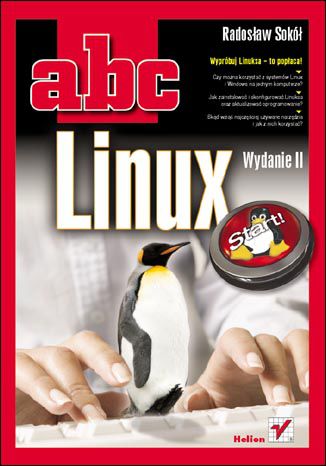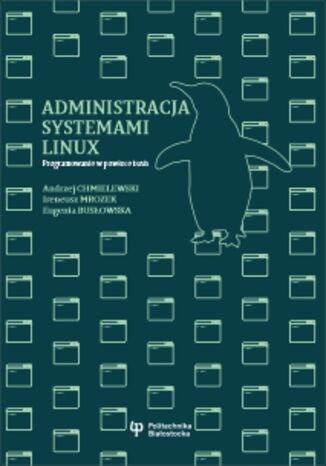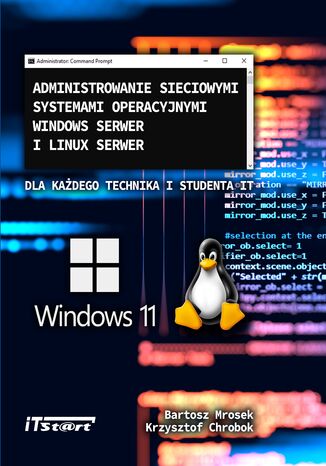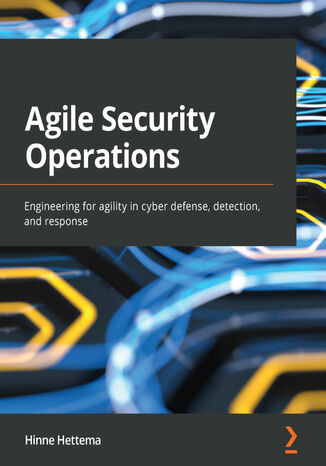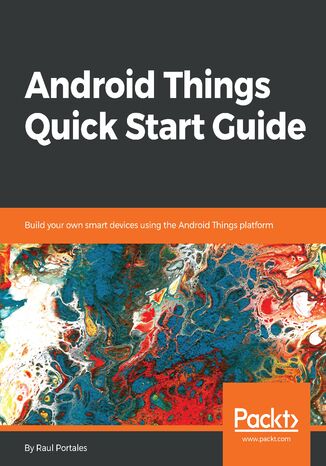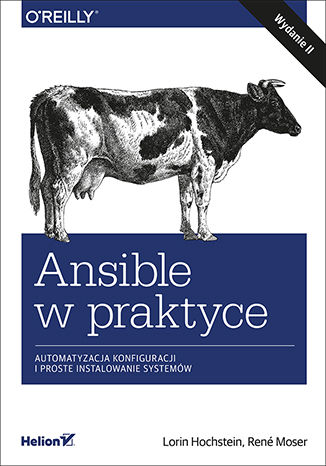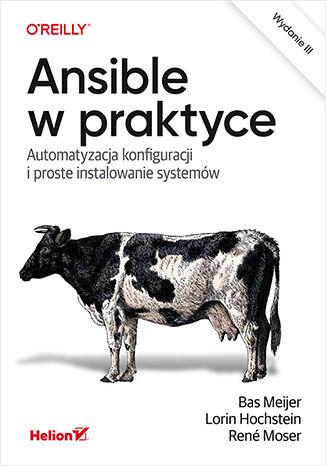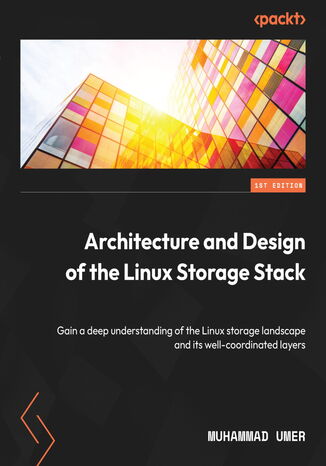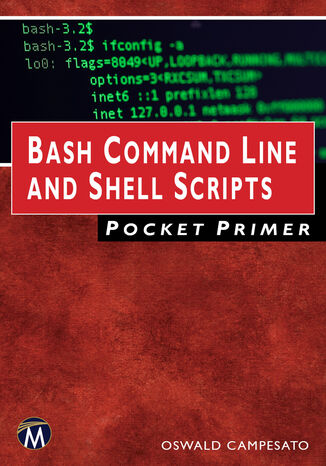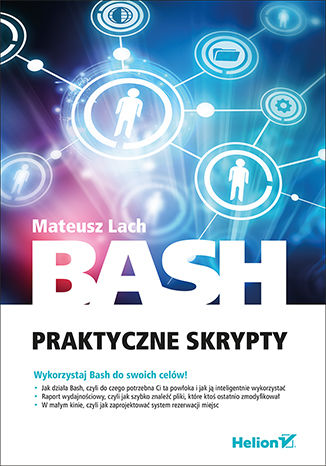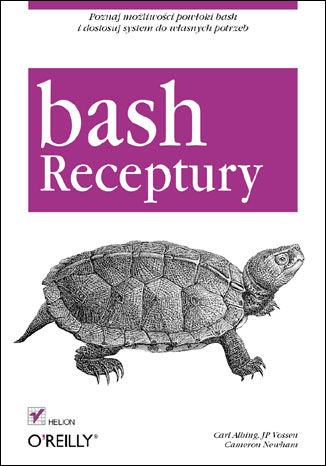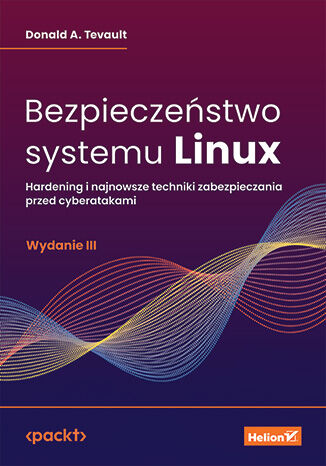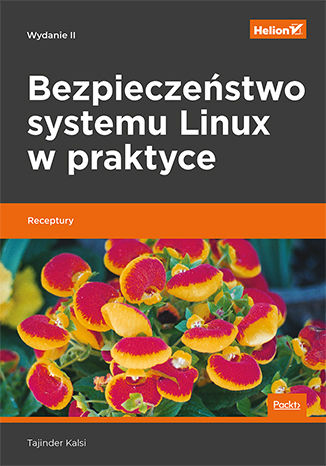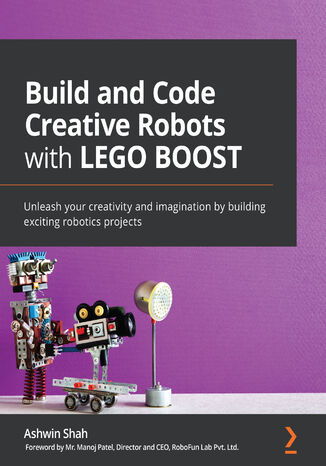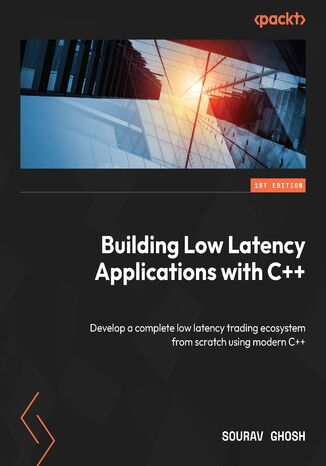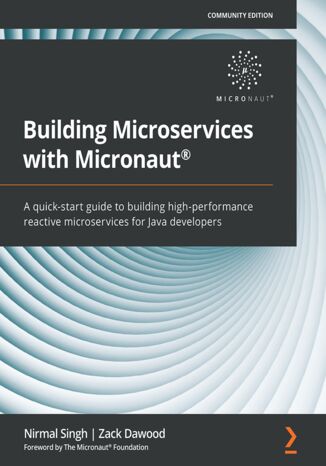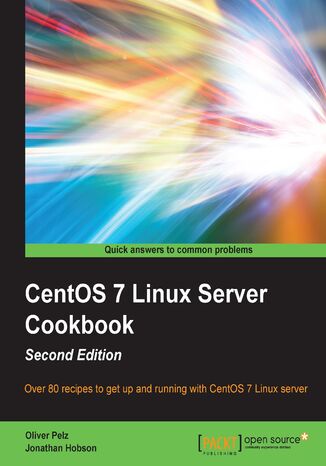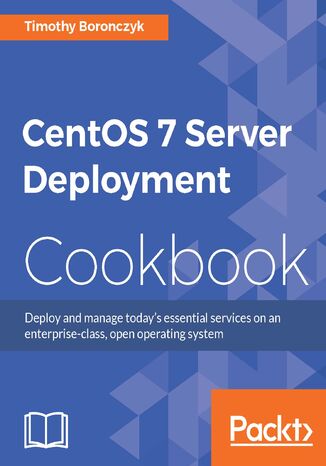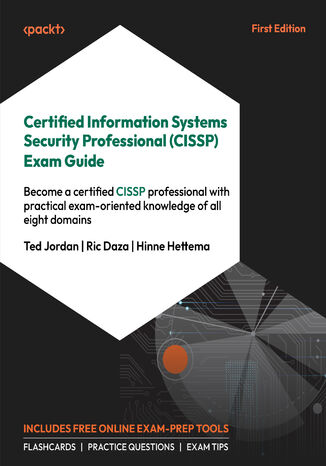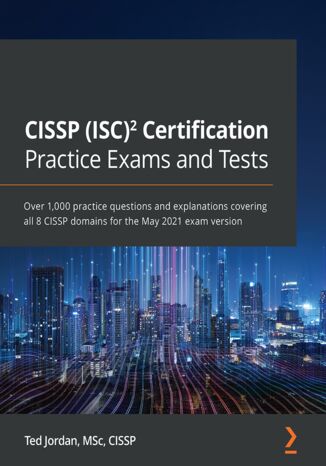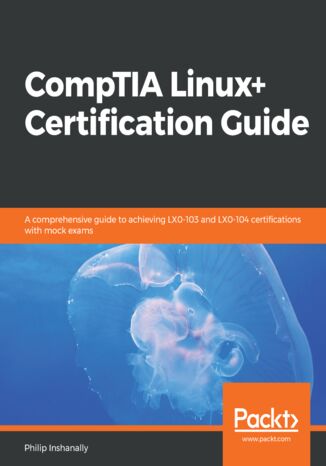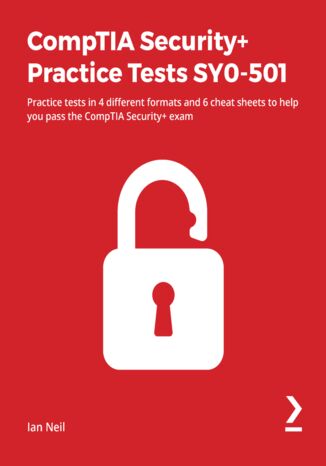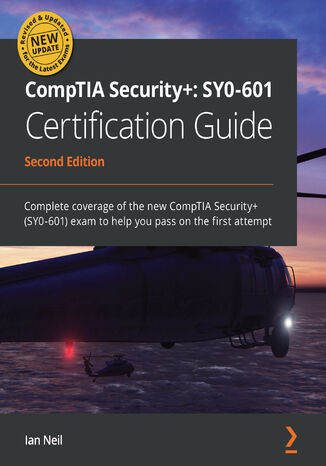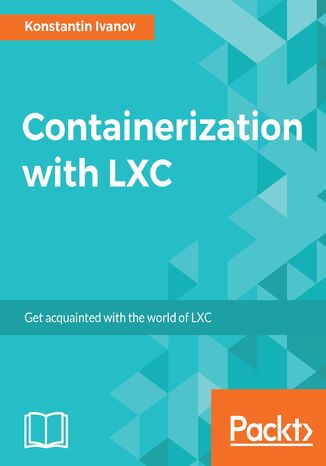Categories
Ebooks
-
Business and economy
- Bitcoin
- Businesswoman
- Coaching
- Controlling
- E-business
- Economy
- Finances
- Stocks and investments
- Personal competence
- Computer in the office
- Communication and negotiation
- Small company
- Marketing
- Motivation
- Multimedia trainings
- Real estate
- Persuasion and NLP
- Taxes
- Social policy
- Guides
- Presentations
- Leadership
- Public Relation
- Reports, analyses
- Secret
- Social Media
- Sales
- Start-up
- Your career
- Management
- Project management
- Human Resources
-
For children
-
For youth
-
Education
-
Encyclopedias, dictionaries
-
E-press
- Architektura i wnętrza
- Health and Safety
- Biznes i Ekonomia
- Home and garden
- E-business
- Ekonomia i finanse
- Esoterecism
- Finances
- Personal finance
- Business
- Photography
- Computer science
- HR & Payroll
- For women
- Computers, Excel
- Accounts
- Culture and literature
- Scientific and academic
- Environmental protection
- Opinion-forming
- Education
- Taxes
- Travelling
- Psychology
- Religion
- Agriculture
- Book and press market
- Transport and Spedition
- Healthand beauty
-
History
-
Computer science
- Office applications
- Data bases
- Bioinformatics
- IT business
- CAD/CAM
- Digital Lifestyle
- DTP
- Electronics
- Digital photography
- Computer graphics
- Games
- Hacking
- Hardware
- IT w ekonomii
- Scientific software package
- School textbooks
- Computer basics
- Programming
- Mobile programming
- Internet servers
- Computer networks
- Start-up
- Operational systems
- Artificial intelligence
- Technology for children
- Webmastering
-
Other
-
Foreign languages
-
Culture and art
-
School reading books
-
Literature
- Antology
- Ballade
- Biographies and autobiographies
- For adults
- Dramas
- Diaries, memoirs, letters
- Epic, epopee
- Essay
- Fantasy and science fiction
- Feuilletons
- Work of fiction
- Humour and satire
- Other
- Classical
- Crime fiction
- Non-fiction
- Fiction
- Mity i legendy
- Nobelists
- Novellas
- Moral
- Okultyzm i magia
- Short stories
- Memoirs
- Travelling
- Narrative poetry
- Poetry
- Politics
- Popular science
- Novel
- Historical novel
- Prose
- Adventure
- Journalism, publicism
- Reportage novels
- Romans i literatura obyczajowa
- Sensational
- Thriller, Horror
- Interviews and memoirs
-
Natural sciences
-
Social sciences
-
School textbooks
-
Popular science and academic
- Archeology
- Bibliotekoznawstwo
- Cinema studies
- Philology
- Polish philology
- Philosophy
- Finanse i bankowość
- Geography
- Economy
- Trade. World economy
- History and archeology
- History of art and architecture
- Cultural studies
- Linguistics
- Literary studies
- Logistics
- Maths
- Medicine
- Humanities
- Pedagogy
- Educational aids
- Popular science
- Other
- Psychology
- Sociology
- Theatre studies
- Theology
- Economic theories and teachings
- Transport i spedycja
- Physical education
- Zarządzanie i marketing
-
Guides
-
Game guides
-
Professional and specialist guides
-
Law
- Health and Safety
- History
- Road Code. Driving license
- Law studies
- Healthcare
- General. Compendium of knowledge
- Academic textbooks
- Other
- Construction and local law
- Civil law
- Financial law
- Economic law
- Economic and trade law
- Criminal law
- Criminal law. Criminal offenses. Criminology
- International law
- International law
- Health care law
- Educational law
- Tax law
- Labor and social security law
- Public, constitutional and administrative law
- Family and Guardianship Code
- agricultural law
- Social law, labour law
- European Union law
- Industry
- Agricultural and environmental
- Dictionaries and encyclopedia
- Public procurement
- Management
-
Tourist guides and travel
- Africa
- Albums
- Southern America
- North and Central America
- Australia, New Zealand, Oceania
- Austria
- Asia
- Balkans
- Middle East
- Bulgary
- China
- Croatia
- The Czech Republic
- Denmark
- Egipt
- Estonia
- Europe
- France
- Mountains
- Greece
- Spain
- Holand
- Iceland
- Lithuania
- Latvia
- Mapy, Plany miast, Atlasy
- Mini travel guides
- Germany
- Norway
- Active travelling
- Poland
- Portugal
- Other
- Przewodniki po hotelach i restauracjach
- Russia
- Romania
- Slovakia
- Slovenia
- Switzerland
- Sweden
- World
- Turkey
- Ukraine
- Hungary
- Great Britain
- Italy
-
Psychology
- Philosophy of life
- Kompetencje psychospołeczne
- Interpersonal communication
- Mindfulness
- General
- Persuasion and NLP
- Academic psychology
- Psychology of soul and mind
- Work psychology
- Relacje i związki
- Parenting and children psychology
- Problem solving
- Intellectual growth
- Secret
- Sexapeal
- Seduction
- Appearance and image
- Philosophy of life
-
Religion
-
Sport, fitness, diets
-
Technology and mechanics
Audiobooks
-
Business and economy
- Bitcoin
- Businesswoman
- Coaching
- Controlling
- E-business
- Economy
- Finances
- Stocks and investments
- Personal competence
- Communication and negotiation
- Small company
- Marketing
- Motivation
- Real estate
- Persuasion and NLP
- Taxes
- Social policy
- Guides
- Presentations
- Leadership
- Public Relation
- Secret
- Social Media
- Sales
- Start-up
- Your career
- Management
- Project management
- Human Resources
-
For children
-
For youth
-
Education
-
Encyclopedias, dictionaries
-
E-press
-
History
-
Computer science
-
Other
-
Foreign languages
-
Culture and art
-
School reading books
-
Literature
- Antology
- Ballade
- Biographies and autobiographies
- For adults
- Dramas
- Diaries, memoirs, letters
- Epic, epopee
- Essay
- Fantasy and science fiction
- Feuilletons
- Work of fiction
- Humour and satire
- Other
- Classical
- Crime fiction
- Non-fiction
- Fiction
- Mity i legendy
- Nobelists
- Novellas
- Moral
- Okultyzm i magia
- Short stories
- Memoirs
- Travelling
- Poetry
- Politics
- Popular science
- Novel
- Historical novel
- Prose
- Adventure
- Journalism, publicism
- Reportage novels
- Romans i literatura obyczajowa
- Sensational
- Thriller, Horror
- Interviews and memoirs
-
Natural sciences
-
Social sciences
-
Popular science and academic
-
Guides
-
Professional and specialist guides
-
Law
-
Tourist guides and travel
-
Psychology
- Philosophy of life
- Interpersonal communication
- Mindfulness
- General
- Persuasion and NLP
- Academic psychology
- Psychology of soul and mind
- Work psychology
- Relacje i związki
- Parenting and children psychology
- Problem solving
- Intellectual growth
- Secret
- Sexapeal
- Seduction
- Appearance and image
- Philosophy of life
-
Religion
-
Sport, fitness, diets
-
Technology and mechanics
Videocourses
-
Data bases
-
Big Data
-
Biznes, ekonomia i marketing
-
Cybersecurity
-
Data Science
-
DevOps
-
For children
-
Electronics
-
Graphics/Video/CAX
-
Games
-
Microsoft Office
-
Development tools
-
Programming
-
Personal growth
-
Computer networks
-
Operational systems
-
Software testing
-
Mobile devices
-
UX/UI
-
Web development
-
Management
Podcasts
- Ebooks
- Operational systems
- Linux
Linux
Wypróbuj Linuksa — to popłaca! Czy można korzystać z systemów Linux i Windows na jednym komputerze? Jak zainstalować i skonfigurować Linuksa oraz aktualizować oprogramowanie? Skąd wziąć najczęściej używane narzędzia i jak z nich korzystać? Linuksowi wkrótce stuknie dwudziestka. Kiedy w 1991 roku jego twórca ogłaszał rozpoczęcie prac nad darmowym systemem operacyjnym, niewielu wierzyło, że to jest możliwe — a dziś trudno byłoby wyobrazić sobie świat bez takiej alternatywy dla komercyjnych systemów. Kolejne dystrybucje Linuksa wciąż zyskują gorących zwolenników, również dlatego, że obsługa komputera z takim systemem staje się coraz łatwiejsza. Jeśli chcesz wreszcie uwolnić się od opłat za wszelkie licencje oraz prawie wszystkich wirusów, a w zamian zyskać wygodny system z darmowym oprogramowaniem dodatkowym, warto poświęcić trochę czasu na zapoznanie się z Linuksem. Nie musisz od razu rzucać się na głęboką wodę — wystarczy zainstalować sobie ten system na osobnej partycji dysku i rozpocząć nową przygodę. Książka "ABC Linux. Wydanie II " pozwoli Ci szybko i możliwie najmniejszym kosztem opanować najpotrzebniejsze, podstawowe funkcje tego systemu operacyjnego, pakietu biurowego OpenOffice, przeglądarki internetowej, multimediów, a nawet podpowie, jak przekształcić Ubuntu Linux na serwer usług sieciowych. Dowiesz się z niej, jak zainstalować, skonfigurować i aktualizować system oraz dodatkowe programy, jak zarządzać informacją i dostępem do nośników danych czy zasobów sieciowych. Zrozumiesz, czym są wirtualne systemy operacyjne i czym Linux różni się od systemów typu Windows. Poczytaj o tym i sprawdź sam — naprawdę warto. Linux — podstawowe informacje, dystrybucje, licencje Instalacja i konfiguracja systemu Uruchamianie i zamykanie systemu oraz logowanie się do niego Aktualizacja oprogramowania i dostosowywanie środowiska pracy Dołączanie systemu plików i nawigacja w takim systemie Pola dialogowe wyboru plików i archiwa danych Przeglądarka WWW, poczta elektroniczna i komunikacja natychmiastowa Pakiet OpenOffice oraz kalkulator Schowek, podgląd dokumentów PDF i mapa znaków Multimedia — obrazy, dźwięki, wideo Połączenia sieciowe, drukarki, własnościowe programy obsługi urządzeń Konta użytkowników, specjalistyczne oprogramowanie Słowniczek terminów i pojęć Przedrostki i jednostki miary stosowane w informatyce Netykieta Przesiądź się na Linuksa, naprawdę warto!
Administracja systemami Linux. Programowanie w powłoce bash
Andrzej Chmielewski; Ireneusz Mrozek; Eugenia Busłowska
Skrypt jest przeznaczony dla studentów jako pomoc dydaktyczna do przedmiotów związanych z administracją systemami Linux. Oferuje kompleksowe wprowadzenie do programowania w powłoce bash, zarówno dla początkujących, jak i dla tych, którzy mają już pewne doświadczenie w programowaniu. Opisuje podstawowe konstrukcje języka, takie jak zmienne, pętle, warunki, funkcje, jak i śledzenie wykonywania oraz zastosowanie wyrażeń regularnych. Skrypt zawiera również przykłady i liczne zadania, o zróżnicowanym poziomie trudności, które pozwalają użytkownikom na praktyczne zastosowanie zdobytej wiedzy.
Administrowanie sieciowymi systemami operacyjnymi Windows Serwer i Linux Serwer
Bartosz Mrosek, Krzysztof Chrobok
Administrowanie sieciowymi systemami operacyjnymi Windows Serwer i Linux Serwer dla każdego Technika i studenta IT to podręcznik przygotowany z myślą o każdym uczniu oraz studencie związanym z kierunkami informatycznymi. Główną tematyką jest konfiguracja i zarządzanie sieciowymi systemami operacyjnymi Windows i Linux, dlatego książka będzie niezastąpioną pomocą podczas przygotowywania się do egzaminów zawodowych, jak i zaliczenia semestru. Zagadnienia opisane w książce zostały odpowiednio ułożone i podzielone na odrębne tematy, gdzie każda usługa to jeden, odrębny rozdział, kolejno omawiający krok po kroku konfigurację usług zarówno w środowiskach Linux jak i Windows. Podręcznik przygotuje użytkownika do instalacji systemu i konfiguracji kluczowych usług, czyli: SSH, Active Directory, Samba SMB, FTP, RDP, e-mail, HTTP oraz NAT.
Agile Security Operations. Engineering for agility in cyber defense, detection, and response
Agile security operations allow organizations to survive cybersecurity incidents, deliver key insights into the security posture of an organization, and operate security as an integral part of development and operations. It is, deep down, how security has always operated at its best.Agile Security Operations will teach you how to implement and operate an agile security operations model in your organization. The book focuses on the culture, staffing, technology, strategy, and tactical aspects of security operations. You'll learn how to establish and build a team and transform your existing team into one that can execute agile security operations. As you progress through the chapters, you’ll be able to improve your understanding of some of the key concepts of security, align operations with the rest of the business, streamline your operations, learn how to report to senior levels in the organization, and acquire funding.By the end of this Agile book, you'll be ready to start implementing agile security operations, using the book as a handy reference.
Android Things Quick Start Guide. Build your own smart devices using the Android Things platform
Android Things is the IoT platform made by Google, based on Android. It allows us to build smart devices in a simple and convenient way, leveraging on the Android ecosystem tools and libraries, while letting Google take care of security updates.This book takes you through the basics of IoT and smart devices. It will help you to interact with common IoT device components and learn the underlying protocols. For a simple setup, we will be using Rainbow HAT so that we don't need to do any wiring.In the first chapter, you will learn about the Android Things platform, the design concepts behind it, and how it relates to other IoT frameworks. We will look at the Developer Kits and learn how to install Android Things on them by creating a simple project.Later, we will explore the real power of Android Things, learning how to make a UI, designing and communicating with companion apps in different ways, showcasing a few libraries. We will demonstrate libraries and you will see how powerful the Android Things operating system is.
Ansible w praktyce. Automatyzacja konfiguracji i proste instalowanie systemów. Wydanie II
Automatyzacja zarządzania konfiguracją i proste instalowanie systemów Zarządzanie konfiguracją oprogramowania w systemach sieciowych jest niebanalnym zadaniem. Nawet zwykła aktualizacja czy wdrożenie nowego oprogramowania mogą się skończyć katastrofą, zwłaszcza w przypadku serwerów pracujących pod kontrolą systemów Linux czy Unix. Konieczność pilnowania ustawień w wielu różnych plikach konfiguracyjnych, z których każdy służy innemu elementowi, sprawia, że problemy mogą sprawiać nawet zasadniczo nieskomplikowane czynności - chyba że konfiguracja i wdrażanie oprogramowania w systemie zostaną zautomatyzowane za pomocą odpowiedniego narzędzia, na przykład Ansible. Istnieje wiele narzędzi do zarządzania konfiguracją oprogramowania. Spośród nich Ansible wyróżnia się szczególnymi zaletami: ma minimalne rozmiary, nie wymaga instalowania czegokolwiek na serwerach i jest proste w użyciu. Dzięki tej książce szybko nauczysz się korzystać z najnowszej wersji Ansible do instalowania nowego kodu aplikacji w środowisku produkcyjnym czy też do lepszego i prostszego zarządzania rozbudowanymi systemami. Zapoznasz się między innymi z oprogramowaniem Ansible Tower, a także dowiesz się, jak skutecznie zarządzać komputerami z systemem Windows i sprzętem sieciowym. Ten niezwykle praktyczny podręcznik powinien stale być pod ręką każdego administratora systemu, wdrożeniowca i programisty! W tej książce między innymi: Ansible a inne narzędzia do zarządzania konfiguracją systemów Scenariusze w języku YAML Testowanie i skalowanie scenariuszy Techniki wdrażania aplikacji w systemie Automatyzacja konfigurowania urządzeń sieciowych Wdrażanie aplikacji w chmurze Ansible: skuteczne narzędzie najlepszych adminów! Lorin Hochstein jest starszym inżynierem oprogramowania w Netfliksie, w zespole zajmującym się inżynierią chaosu. Wcześniej pracował jako inżynier w SendGrid Labs, główny architekt usług chmurowych w Nimbis Services. Obronił doktorat w dziedzinie informatyki na Uniwersytecie Maryland. Rene Moser jest inżynierem systemów. Od lat angażuje się w projekty open source takie jak ASF CloudStack. Od 2016 roku jest członkiem projektu Ansible Core. Ceni sobie proste systemy, które łatwo skalować. Mieszka w Szwajcarii z rodziną.
Ansible w praktyce. Automatyzacja konfiguracji i proste instalowanie systemów. Wydanie III
Bas Meijer, Lorin Hochstein, René Moser
Ansible służy do automatyzacji wdrożeń oprogramowania i zarządzania jego konfiguracjami. Inżynierowie cenią ten framework za minimalne rozmiary, brak konieczności instalowania czegokolwiek na serwerach i prostotę użytkowania. Oferuje on proste i bardzo przydatne funkcje przeznaczone do automatyzacji wielowarstwowych środowisk, przydaje się też do obsługi ciągłej integracji i ciągłego wdrażania oprogramowania (CI/CD) bez żadnego przestoju. Może służyć do różnych celów: przygotowania infrastruktury jako kodu, wdrożeń aplikacji czy automatyzacji codziennych, czasochłonnych zadań administracyjnych. Ta książka jest przeznaczona dla programistów i administratorów, którzy poszukują wydajnej metody zarządzania systemami. Pokazano w niej, w jaki sposób działa Ansible i jak należy przygotować go do pracy. Omówiono sposoby tworzenia scenariuszy (są to skrypty do zarządzania konfiguracją), zasady zarządzania zewnętrznymi serwerami, a także zaprezentowano najciekawsze funkcjonalności tego oprogramowania: wbudowane deklaratywne moduły . W tym wydaniu uwzględniono zmiany wynikające z dynamicznego rozwoju Ansible, dodano też kilka rozdziałów poświęconych kontenerom, platformie Molecule, kolekcjom Ansible, obrazom i infrastrukturze chmurowej. Wszystkie kody zostały zaktualizowane, a całość została wzbogacona o praktyczne wskazówki dotyczące dobrych praktyk programistycznych na platformach do weryfikowania kodu. W książce: zarządzanie konfiguracją i wdrożeniami systemów za pomocą Ansible dobre praktyki pracy z Ansible formaty kolekcji, moduły i wtyczki generowanie obrazów kontenerów i instancji chmurowych tworzenie infrastruktury chmurowej automatyzacja procesów CI/CD w środowisku programistycznym platforma Ansible Automation w metodyce DevOps Minimalne rozmiary, prostota i wyjątkowa skuteczność — poznaj Ansible!
The Linux storage stack serves as a prime example of meticulously coordinated layers. Embark on a journey through the kernel code with Architecture and Design of the Linux Storage Stack, crafted for anyone seeking in-depth knowledge about the layered design of Linux storage and its landscape.You’ll explore the Linux storage stack and its various concepts. You’ll unlock the secrets of the virtual filesystem and the actual filesystem and the differences in their implementation, the role of the block layer, the Multi-Queue and Device Mapper frameworks, I/O schedulers, physical storage layout, and how to analyze all the layers in the storage stack.By the end of this book, you’ll be acquainted with how a simple I/O request from a process travels down through all the layers and ends up in physical storage.
Bash Command Line and Shell Scripts Pocket Primer. Mastering Bash Commands and Scripting Techniques
Mercury Learning and Information, Oswald Campesato
As part of the best-selling Pocket Primer series, this book introduces readers to useful command-line utilities for creating powerful shell scripts. It focuses on the “bash” command set, though many concepts apply to other command shells like sh, ksh, zsh, and csh. The book covers piping data between commands and using versatile sed and awk commands. Aimed at beginners, it also serves as a good reference for those with some experience in shell scripting.The journey starts with an introduction to bash, covering files and directories, useful commands, and conditional logic with loops. Readers then learn to filter data with grep, transform data with sed, and work with awk. The book introduces shell scripts, showcasing their use with grep and awk for data manipulation. Various scripts are provided for data scientists and analysts needing shell-based solutions for text file cleaning.Understanding these concepts is crucial for simplifying routine tasks and creating efficient shell scripts. This book transitions readers from novices to proficient scriptwriters, combining theoretical knowledge and practical skills. Companion files with source code examples enhance learning. By the end, readers will be equipped to implement shell scripts in real-world scenarios.
Wykorzystaj Bash do swoich celów! Jak działa Bash, czyli do czego potrzebna Ci ta powłoka i jak ją inteligentnie wykorzystać Raport wydajnościowy, czyli jak szybko znaleźć pliki, które ktoś ostatnio zmodyfikował W małym kinie, czyli jak zaprojektować system rezerwacji miejsc Powłoka Bash jest bardzo wygodnym narzędziem, pozwalającym na automatyzację wielu różnych czynności, kłopotliwych dla administratora systemu. Jest też uniwersalna: choć powstała jako powłoka dla systemów uniksowych, można używać jej także na komputerach wyposażonych w Windows. Jeśli chcesz sprawdzić, do czego warto użyć Basha, i zobaczyć, jak działa powłoka w konkretnych sytuacjach, koniecznie zajrzyj do tej książki. W przystępny, klarowny sposób omawia ona podstawowe zagadnienia związane z Bashem, a nade wszystko zawiera praktyczne, gotowe skrypty i liczne ćwiczenia. W książce znajdziesz zestawy instrukcji pozwalających efektywnie wyszukiwać w dużej bazie określone pliki, sortować, wykonywać skomplikowane obliczenia, generować zbiory liczb, stosować funkcje rekurencyjne i sprawdzać poprawność konfiguracji sieci komputerowej. Każdy rozdział rozpoczyna się od krótkiego opisu konkretnego problemu, który można rozwiązać dzięki skryptowi Basha. Taki układ na pewno docenią wszyscy, którzy nie mają zbyt wiele czasu na poznawanie teorii, gdy natychmiast potrzebna jest im praktyka. Sprawdź, zastosuj i oszczędź swój czas! Konwencje programistyczne Instalacja i konfiguracja środowiska pracy Zmienne, stringi, podstawowe polecenia Tryb interaktywny/konwersacyjny i wsadowy Instrukcje, operatory, pętle i tablice Parametry wejściowe, zmienne liczbowe i wyrażenia matematyczne Analiza zbioru plików pod kątem daty ich ostatniej modyfikacji Sortowanie liczb i funkcje Sprawdzanie poprawności konfiguracji sieci komputerowej Ciągi Fibonacciego Prosty kalkulator ze wsparciem dla arytmetyki Systemy rezerwacji miejsc Rekurencyjne wyszukiwanie dat w plikach Niech Twój komputer działa za Ciebie!
Cameron Newham, JP Vossen, Carl Albing
Poznaj możliwości powłoki bash i dostosuj system do własnych potrzeb Jak pisać skrypty konwertujące pliki w formacie DOS i Unix? Jak konfigurować interpreter bash, aby odpowiadał potrzebom i stylowi pracy użytkownika? Jak opracować bezpieczne skrypty powłoki? Bash to jedna z najpopularniejszych powłok systemów uniksowych, umożliwiająca pracę interaktywną i wsadową. Język basha pozwala na definiowanie aliasów i funkcji, a także zawiera konstrukcje sterujące przepływem. Bash (tak jak wiele innych narzędzi opisanych w tej książce) stworzono w ramach projektu GNU - wolno dostępnego systemu operacyjnego. Sposób używania powłoki jest bardzo prosty, polega na wprowadzeniu polecenia zgodnie z regułami składni. Następnie zostaje ono zinterpretowane i wykonane przez system. Książka "bash. Receptury" zawiera opis powłoki bash oraz prezentuje praktyczne przykłady rozwiązań problemów spotykanych powszechnie podczas projektowania skryptów. W każdej chwili możesz się do nich odwołać, dostosowując system do własnych potrzeb. Podręcznik obejmuje również opis zasad funkcjonowania interpretera - ich zastosowanie umożliwia zwiększenie wydajności pracy. Korzystając z tej książki, dowiesz się, jak pobierać interpreter bash dla różnych systemów lub korzystać z powłoki bash bez jej pobierania; poznasz techniki automatyzacji zadań oraz rozwiązania skryptowe odnoszące się do operacji wejścia-wyjścia czy przetwarzania plików, a także sposoby tworzenia programów i wykonywania zadań administracyjnych. Praca z powłoką bash Standardowy strumień wejściowy Standardowy strumień wyjściowy Wykonywanie poleceń Podstawy tworzenia skryptów - zmienne powłoki Logika i arytmetyka powłoki Dodatkowe mechanizmy skryptowe Przetwarzanie informacji o dacie i czasie Skrypty usprawniające pracę użytkownika Interpretacja danych Bezpieczne skrypty powłoki Zadania administracyjne "bash. Receptury" - wszystko, czego potrzebujesz, aby zapewnić optymalne warunki pracy systemu!
Systemy linuksowe uchodzą za bezpieczne i odporne na cyberataki. Jednak nawet najbezpieczniejszy system może paść ich ofiarą, jeśli jego administrator nie zastosuje odpowiednich środków zabezpieczających. Cyberprzestępcy wciąż opracowują i testują nowe metody ataków, dlatego też specjaliści do spraw bezpieczeństwa nieustannie muszą doskonalić swoje umiejętności. Oto kompleksowe omówienie sposobów wdrażania najnowszych dostępnych środków zabezpieczających systemy linuksowe. Z książki dowiesz się, jak skonfigurować laboratorium do ćwiczeń praktycznych, tworzyć konta użytkowników z odpowiednimi poziomami uprawnień, chronić dane dzięki uprawnieniom i szyfrowaniu, a także skonfigurować zaporę sieciową przy użyciu najnowszych technologii. Nauczysz się też automatyzować takie czynności jak monitorowanie systemu za pomocą auditd i utwardzanie (hardening) konfiguracji jądra Linux. Poznasz również sposoby ochrony przed złośliwym oprogramowaniem i skanowania systemów pod kątem luk w zabezpieczeniach. Znajdziesz tu ponadto podpowiedź, jak używać Security Onion do skonfigurowania systemu wykrywania włamań. W książce między innymi: zapobieganie naruszeniom bezpieczeństwa systemów Linux dodatkowe funkcje i możliwości systemu Linux ochrona przed nieautoryzowanym dostępem konfiguracja uprawnień do plików i katalogów utwardzanie usługi Secure Shell szablony zabezpieczeń i monitorowanie Twój Linux Twoją twierdzą!
Bezpieczeństwo systemu Linux w praktyce. Receptury. Wydanie II
Wokół zagadnienia bezpieczeństwa Linuksa narosło sporo mitów. Niektórzy uważają, że jako system open source nie zapewnia odpowiedniego poziomu bezpieczeństwa. Inni - że jedynie eksperci są w stanie poradzić sobie z wirusami i atakami hakerów na ten system. Są również osoby twierdzące, że Linux jest całkowicie odporny na wirusy i trudno go skompromitować. Żadne z tych twierdzeń nie jest do końca prawdziwe. Podczas konfigurowania i użytkowania systemów linuksowych bezpieczeństwo powinno być priorytetem. Istnieje wiele sposobów wykrywania i usuwania luk w zabezpieczeniach i rzetelny administrator systemu jest w stanie poradzić sobie z tym zadaniem. Sięgnij po tę książkę, jeśli jesteś odpowiedzialny za bezpieczeństwo systemu linuksowego. Zawarto tu szereg porad i wskazówek dotyczących konfiguracji jądra, bezpieczeństwa systemu plików i sieci oraz różnych narzędzi usprawniających administrowanie systemem. Nie zabrakło omówienia specjalnych dystrybucji Linuksa, opracowanych z myślą o monitorowaniu bezpieczeństwa. Zaprezentowano zagadnienia dotyczące skanowania w poszukiwaniu luk, wykrywania włamań oraz audytowania systemu Linux. Ciekawym tematem zawartym w książce są zasady bezpiecznego korzystania z takich usług jak HTTPD, FTP i telnet. Zrozumienie zaprezentowanych tu treści jest łatwiejsze dzięki licznym praktycznym przykładom. W tej książce między innymi: solidne podstawy bezpieczeństwa systemów linuksowych optymalne konfigurowanie jądra systemu usuwanie luk w zabezpieczeniach powłoki bash monitorowanie i analiza dzienników zdarzeń oraz skanowanie sieci utwardzanie systemów linuksowych za pomocą pakietu Lynis Przygotuj się na atak. Zabezpiecz swojego Linuksa!
LEGO BOOST is a feature-rich creative toolbox that helps kids to develop science, technology, engineering, and mathematics (STEM) skills in a fun way. The LEGO BOOST kit consists of motors, sensors, and more than 840 LEGO pieces to bring various multifunctional robots to life. This book will take you on an interesting and enjoyable journey where you will have fun building robots while developing your problem-solving and logical thinking skills.This book is an end-to-end guide that will take you from a beginner to expert level of robot building with LEGO BOOST and Scratch. Starting with the unboxing and a brief introduction to LEGO BOOST, you'll quickly get your first robotic model up and running. You'll understand how to use the electronic and non-electronic components and have fun building a range of intriguing robotics projects with increasing complexity and advanced functionality. Throughout the book, you'll work on a variety of amazing projects, such as building your own R2D2, a fictional character from Star Wars, that will pique your curiosity to learn robotics and help you explore the full potential of the LEGO BOOST kit. Once you've had fun working with the projects, you'll be introduced to an interesting challenge for you to solve by yourself!By the end of this book, you'll have gained the skills to build creative robotics projects with the LEGO BOOST creative toolbox, and have built on your logical thinking and problem-solving skills.
C++ is meticulously designed with efficiency, performance, and flexibility as its core objectives. However, real-time low latency applications demand a distinct set of requirements, particularly in terms of performance latencies.With this book, you’ll gain insights into the performance requirements for low latency applications and the C++ features critical to achieving the required performance latencies. You’ll also solidify your understanding of the C++ principles and techniques as you build a low latency system in C++ from scratch.You’ll understand the similarities between such applications, recognize the impact of performance latencies on business, and grasp the reasons behind the extensive efforts invested in minimizing latencies. Using a step-by-step approach, you’ll embark on a low latency app development journey by building an entire electronic trading system, encompassing a matching engine, market data handlers, order gateways, and trading algorithms, all in C++. Additionally, you’ll get to grips with measuring and optimizing the performance of your trading system.By the end of this book, you’ll have a comprehensive understanding of how to design and build low latency applications in C++ from the ground up, while effectively minimizing performance latencies.
Nirmal Singh, Zack Dawood, The Micronaut(R) Foundation
The open source Micronaut® framework is a JVM-based toolkit designed to create microservices quickly and easily. This book will help full-stack and Java developers build modular, high-performing, and reactive microservice-based apps using the Micronaut framework.You'll start by building microservices and learning about the core components, such as ahead-of-time compilation, reflection-less dependency injection, and reactive baked-in HTTP clients and servers. Next, you will work on a real-time microservice application and learn how to integrate Micronaut projects with different kinds of relational and non-relational databases. You'll also learn how to employ different security mechanisms to safeguard your microservices and integrate microservices using event-driven architecture in the Apache Kafka ecosystem. As you advance, you'll get to grips with automated testing and popular testing tools. The book will help you understand how you can easily handle microservice concerns in Micronaut projects, such as service discovery, API documentation, distributed configuration management, fallbacks, and circuit breakers. Finally, you'll explore the deployment and maintenance aspects of microservices and get up to speed with the Internet of Things (IoT) using the Framework.By the end of this book, you'll be able to build, test, deploy, and maintain your own microservice apps using the framework.
This book will provide you with a comprehensive series of starting points that will give you direct access to the inner workings of the latest CentOS version 7 and help you trim the learning curve to master your server.You will begin with the installation and basic configuration of CentOS 7, followed by learning how to manage your system, services and software packages. You will then gain an understanding of how to administer the file system, secure access to your server and configure various resource sharing services such as file, printer and DHCP servers across your network. Further on, we cover advanced topics such as FTP services, building your own DNS server, running database servers, and providing mail and web services. Finally, you will get a deep understanding of SELinux and you will learn how to work with Docker operating-system virtualization and how to monitor your IT infrastructure with Nagios.By the end of this book, you will have a fair understanding of all the aspects of configuring, implementing and administering CentOS 7 Linux server and how to put it in control.
CentOS 7 Server Deployment Cookbook
CentOS is derived from Red Hat Enterprise Linux (RHEL) sources and is widely used as a Linux server. This book will help you to better configure and manage Linux servers in varying scenarios and business requirements. Starting with installing CentOS, this book will walk you through the networking aspects of CentOS. You will then learn how to manage users and their permissions, software installs, disks, filesystems, and so on. You’ll then see how to secure connection to remotely access a desktop and work with databases. Toward the end, you will find out how to manage DNS, e-mails, web servers, and more. You will also learn to detect threats by monitoring network intrusion. Finally, the book will cover virtualization techniques that will help you make the most of CentOS.
Ted Jordan, Ric Daza, Hinne Hettema
The (ISC)2 CISSP exam evaluates the competencies required to secure organizations, corporations, military sites, and government entities. The comprehensive CISSP certification guide offers up-to-date coverage of the latest exam syllabus, ensuring you can approach the exam with confidence, fully equipped to succeed.Complete with interactive flashcards, invaluable exam tips, and self-assessment questions, this CISSP book helps you build and test your knowledge of all eight CISSP domains. Detailed answers and explanations for all questions will enable you to gauge your current skill level and strengthen weak areas.This guide systematically takes you through all the information you need to not only pass the CISSP exam, but also excel in your role as a security professional. Starting with the big picture of what it takes to secure the organization through asset and risk management, it delves into the specifics of securing networks and identities. Later chapters address critical aspects of vendor security, physical security, and software security.By the end of this book, you'll have mastered everything you need to pass the latest CISSP certification exam and have this valuable desktop reference tool for ongoing security needs.
The CISSP exam is for security professionals who understand that poor security can put a company out of business. The exam covers eight important security domains - risk management, security architecture, data security, network security, identity management, auditing, security operations, and software development security. Designed to cover all the concepts tested in the CISSP exam, CISSP (ISC)2 Certification Practice Exams and Tests will assess your knowledge of information security and introduce you to the tools you need to master to pass the CISSP exam (version May 2021). With more than 100 questions for every CISSP domain, this book will test your understanding and fill the gaps in your knowledge with the help of descriptive answers and detailed explanations. You'll also find two complete practice exams that simulate the real CISSP exam, along with answers. By the end of this book, you'll be ready to take and pass the (ISC)2 CISSP exam and achieve the Certified Information Systems Security Professional certification putting you in the position to build a career as a security engineer, security manager, or chief information security officer (CISO)
The Linux+ certification provides a broad awareness of Linux operating systems, while giving professionals an upper hand in the IT industry. With this certification, you’ll be equipped with the all-important knowledge of installation, operation, administration, and troubleshooting services.This CompTIA Linux+ Certification Guide will give you an overview of the system architecture. You’ll understand how to install and uninstall Linux distributions, followed by working with various package managers. You’ll then move on to manipulating files and processes at the command-line interface (CLI) and creating, monitoring, killing, restarting, and modifying processes.As you progress, you’ll be equipped to work with display managers and learn how you can create, modify, and remove user accounts and groups, as well as understand how to automate tasks. The last set of chapters will help you configure dates and set up local and remote system logging. In addition to this, you’ll explore different internet protocols, and delve into network configuration, security administration, Shell scripting, and SQL management.By the end of this book, you’ll not only have got to grips with all the modules you need to study for the LX0-103 and LX0-104 certification exams, but you’ll also be able to test your understanding with practice questions and mock exams.
CompTIA Security+ is a core security certification that will validate your baseline skills for a career in cybersecurity. Passing this exam will not only help you identify security incidents but will also equip you to resolve them efficiently. This book builds on the popular CompTIA Security+ Certification Guide, which mirrors the SY0-501 exam pattern.This practice test-based guide covers all six domains of the Security+ SY0-501 exam: threats, attacks, and vulnerabilities; technologies and tools; architecture and design; identity and access management; cryptography and PKI; and risk management. You’ll take six mock tests designed as per the official Security+ certification exam pattern, each covering significant aspects from an examination point of view. For each domain, the book provides a dedicated cheat sheet that includes important concepts covered in the test. You can even time your tests to simulate the actual exam. These tests will help you identify gaps in your knowledge and discover answers to tricky exam questions.By the end of this book, you’ll have developed and enhanced the skills necessary to pass the official CompTIA Security+ exam.
The CompTIA Security+ certification validates the fundamental knowledge required to perform core security functions and pursue a career in IT security. Authored by Ian Neil, a world-class CompTIA certification trainer, this book is a best-in-class study guide that fully covers the CompTIA Security+ 601 exam objectives.Complete with chapter review questions, realistic mock exams, and worked solutions, this guide will help you master the core concepts to pass the exam the first time you take it. With the help of relevant examples, you'll learn fundamental security concepts from certificates and encryption to identity and access management (IAM). As you progress, you'll delve into the important domains of the exam, including cloud security, threats, attacks and vulnerabilities, technologies and tools, architecture and design, risk management, cryptography, and public key infrastructure (PKI).You can access extra practice materials, including flashcards, performance-based questions, practical labs, mock exams, key terms glossary, and exam tips on the author's website at securityplus.training.By the end of this Security+ book, you'll have gained the knowledge and understanding to take the CompTIA exam with confidence.
Containerization with LXC. Build, manage, and configure Linux containers
In recent years, containers have gained wide adoption by businesses running a variety of application loads. This became possible largely due to the advent of kernel namespaces and better resource management with control groups (cgroups). Linux containers (LXC) are a direct implementation of those kernel features that provide operating system level virtualization without the overhead of a hypervisor layer. This book starts by introducing the foundational concepts behind the implementation of LXC, then moves into the practical aspects of installing and configuring LXC containers. Moving on, you will explore container networking, security, and backups. You will also learn how to deploy LXC with technologies like Open Stack and Vagrant. By the end of the book, you will have a solid grasp of how LXC is implemented and how to run production applications in a highly available and scalable way.

